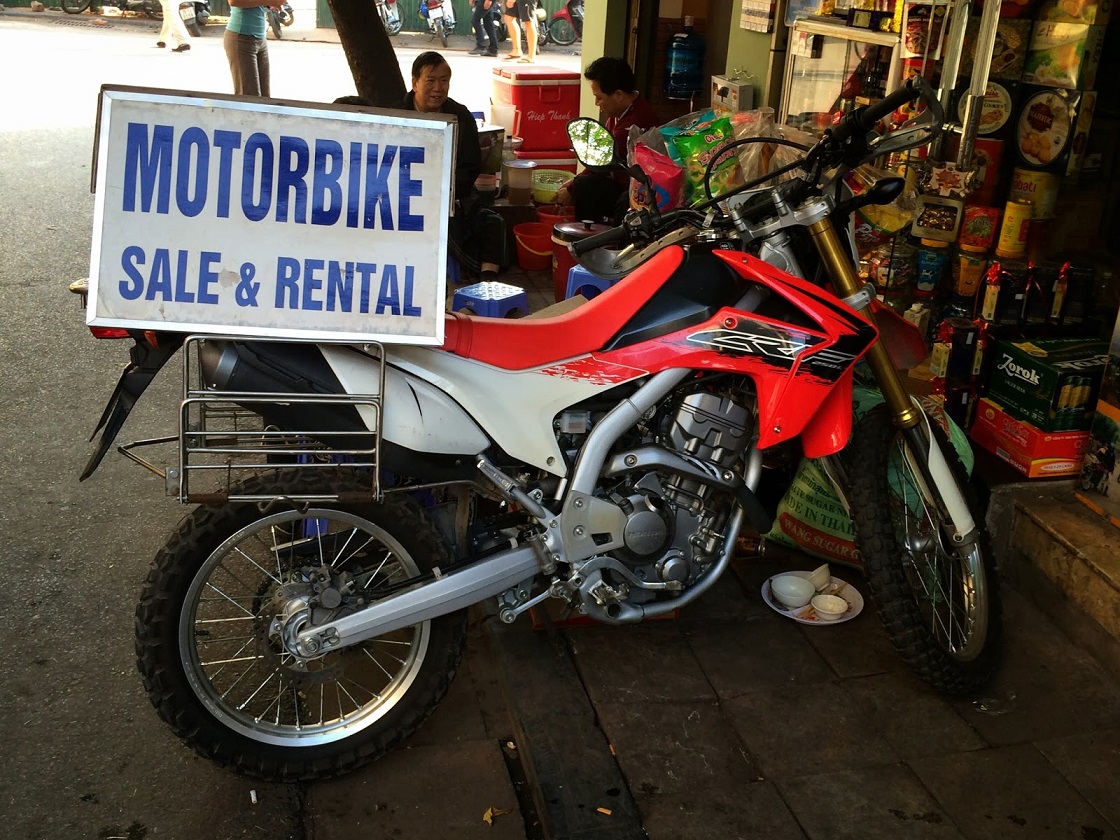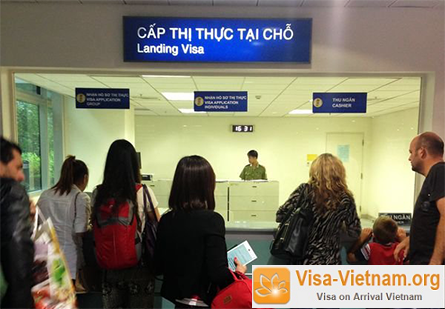Traveling Vietnam By Motorbike: A Practical Guide

If you are heading to Vietnam soon you will probably have given thought to traveling this beautiful country by motorbike. By having your own means of transport it gives you a freedom to travel the country that by taking other means of transport simply doesn’t provide. I will never in my life forget the drive up to Da Lat, as we zigzagged up the mountain roads one eye on the buses whizzing by us and another on the beautiful vistas of the countryside. Eventually getting so high we basically drove into a cloud. It’s unlike any other country in the world and traveling by motorbike allows you to enjoy it like nothing else. So now I have given you a taste of what to expect let's get into the nitty-gritty of getting a bike and taking to the roads in Vietnam!
License
The first thing you will want to make sure you have is a license to drive. That means having your drivers license from your home country plus an International Drivers Permit. These are valid in over 100 countries, are valid for a year and cost roughly $10. Some people will claim that you don’t need a license to ride a motorbike in Vietnam but you do so at your own pearl! You should follow the laws of any country that you are traveling in and a valid driver license is the law. If you find yourself in an accident your insurance will not cover you and trip to the hospital is not cheap in Vietnam.
Buying a bike or rent?
It really depends on how long you expect to stay in Vietnam. If you are moving here for an extended period, say 6+ months buying is, of course, the better option, and if this is the case I would buy new. If you are traveling for over a month what many people will do is buy a bike in HCMC or Hanoi from a fellow traveler or one of the many used motorbike dealers. They will then sell it when they reach their destination, buying a used bike can cost as little as $150, however you should road test any bike you buy no matter who it is you buy it from, ask to take it for a ride and for an independent mechanic to check it over. If they refuse, refuse to buy. If you are renting I would suggest renting for only a small part of the journey, for instance, the trip from Da Nang to Hue. You will be able to rent a bike in Da Nang and drop it off in Hue, this is a very convenient way to ride around the country without the hassle of buying the bike.
Safety
Roads in Vietnam can be chaotic to put it lightly! When you first arrive you will be amazed at what some of the drivers will attempt on the busy roads of HCMC or Hanoi. Don’t worry though, there is a rhythm to the madness. Once you understand the road rules of Vietnam and they do have rules. You will feel a lot safer and calmer on the roads. Essentially the right-hand side is reserved for the slowest vehicles, pedal bikes, motorbikes etc and as you go further left this is for the cars and for people looking to overtake. Don’t try and overtake someone on the right-hand side! They will not expect it and could lead to crashes. Always get your bike checked by a mechanic and get it serviced every 200 miles or so. You want the oil checked, the wheels and the brakes. This will cost $5 depending on the city you are in. Traveling at night can be dangerous especially once you get on to Highway 1 the main highway in the country. The buses and cargo that use the highway can be a terrifying prospect for a novice driver I would highly suggest not to travel at night on the highway.
Planning your trip
Which takes us to our next point. Planning your trip. Traveling from HCMC north to Hanoi or vice versa is a well-traveled path. It is relatively easy even for a novice to find your way around Vietnam. Street signs are abundant and generally, the flow of traffic will lead you to the next big city. One thing to note is to plan your journey ahead of time. Give yourself an extra hour over the Google Maps time to get there and book accommodation ahead of time. Make sure you regularly fill up with gas. And finally, travel with companions it provides extra safety and it’s going to be whole lot more fun!
Are you a UK citizen and heading to Vietnam?
If you are from the UK and heading to Vietnam there are a number of options for obtaining a visa. If your stay is under 15 days you are exempt from getting a visa, simply show up with your passport and a flight ticket showing that you will be leaving in under 15 days and on you go.
If you are staying for longer you can either get a tourist visa or you may be coming to work and thus your choices are different.
Top Ten Things to do in Ho Chi Minh City

Ho Chi Minh City, formerly known as Saigon is a bustling and frantic epicentre of Vietnamese culture and history. Somewhat overwhelming but nevertheless charming, the popular Vietnamese destination allows you to dive completely into local life. Roads packed with scooters and streets filled with restaurants and cafes, you’ll find delicious Vietnamese cuisine on every corner. The city offers up beautiful French colonial architecture, vast green parks and busy markets. With so much to do in one place, it’s difficult to know where to start, here are ten things to do whilst visiting the city.
1. Cu Chi Tunnels
An opportunity not to be missed, the chance to experience how life would have been like for Vietnamese soldiers in 1948. The array of underground tunnels is over 120km and visitors are able to fit through the tiny tunnels. Located around an hour from Ho Chi Minh city, this activity is very popular with history buffs.
2. Bitexco Financial Tower and Sky Deck
If you’re looking to get a panoramic view of the city, Bitexcto’s Financial Tower is a 68-storey skyscraper filled with offices, restaurants, shops and even a helipad. The Sky Deck is open daily and offers up spectacular views, binoculars are also available to use.
3. Reunification Palace
The former base of Vietnamese General Ngo Dinh Diem, the palace has been frozen in time making it feel like you’ve walked into 1975. A popular tourist spot for visitors, two of the original tanks are also present in the grounds. Free guided tour guides are available in a number of languages.
4. Ho Chi Minh Square
Located in the city centre, the Ho Chi Minh square is a friendly, green and busy area perfect for relaxing and catching up with friends. In the square, you’ll find the statue of Uncle Ho and the City Hall. Especially beautiful at night time be sure to visit as the sun sets to see the square lit up. With restaurants and cafes up and down the square, it’s packed with both tourists and locals.
5. Ben Thanh Market
Found in District 1, the large marketplace is full of souvenirs, food, crafts and art. Overwhelming at times and easy to get lost in, it’s best to visit the market in the cooler time of the day. One of Ho Chi Minh’s most popular tourist posts, the market is very well known and gives you an insight into local Vietnamese life.
6. Jade Emperor Pagoda
Built at the beginning of the twentieth century by the Cantonese community, the beautiful temple is a calm sanctuary away from the hustle and bustle of the city. Escape the chaotic streets with a visit to one of the most popular shrines in Ho Chi Minh. Visitors are welcome to make a donation.
7. Central Post Office
The functioning post office is the epitome of Ho Chi Minh’s spectacular french-colonial architecture. Opening in 1891, the building is a sight to behold from all angles, as well as admiring the design you can also buy stamps and send letters. Definitely a spot for history lovers.
8. Notre Dame Cathedral
Just across the square from Ho Chi Minh’s Central Post Office is Notre Dame Cathedral. Tick off two must-see spots in one afternoon in downtown Saigon. Built by French colonists in the late nineteenth century, the cathedral is currently undergoing some renovation work but masses are still held weekly for visitors.
9. War Remnants Museum
A very informative and eye-opening experience, the museum shows a detailed and shocking account of the Vietnam War including graphic photographs and military equipment. Definitely not for the faint-hearted, the displays on show exhibit the brutality of the war.
10. Golden Dragon Water Puppet Theatre
A very popular option for tourists, the traditional water puppet shows are usually accompanied by a live orchestras playing old-fashioned music. The shows are both entertaining and offer a glimpse into Vietnamese culture. Be sure to book in advance as the shows are very popular and get booked up quickly.
Solo Travel Guide to Vietnam

If you have been dying to travel to Vietnam, yet you have no one to go with you, why don't you visit the country on your own? Vietnam is a relatively safe country to visit for all kinds of travelers. For as long as you exercise precaution and you come prepared, traveling to the country on your own should not be a problem. Here’s a solo travel guide to Vietnam for those who are planning to visit the country on their own.
Transportation
It's easy to get around Vietnam on your own. Riding a motorbike is the most popular way to get around the country especially in big cities like Hanoi and Ho Chi Minh. If you have an International driving license, you can rent a motorbike and navigate the city on your own. But if you are not comfortable with driving the motorbike yourself, you can join motorbike tours, where you can hop at the back of a motorbike and your driver can take you around for a tour of the local attractions.
There are also taxis available in the major cities that you can hire for a minimal fee. If you want to explore the countryside and venture into the provinces, taking the train is a good idea. But if you have a limited time and you’re not comfortable with the idea of taking an overnight train, you can book a flight at one of the domestic airlines of Vietnam.
What to do
There are plenty of things to do in Vietnam for solo travelers. One of the things that you should not miss is to experience the local street food in Vietnam. In fact, your trip to the country would not be complete without sampling the most delicious local specialties such as the Banh Mi, Banh Xeo, Com Tam, Cang Cua and of course, a piping hot bowl of Pho!
You can also join walking tours hosted by a local where you get to explore the city along with other travelers. It’s a great way to learn about the country from a local perspective and a great opportunity to meet new friends, too!
Clothing
If you're visiting holy places, such as temples and national monuments, avoid wearing very revealing clothes. As a tourist, it's important that you respect the country's local culture and customs. Women can wear jeans, long skirts, and long dresses but avoid wearing very tiny shorts and revealing tops.
On the other hand, if you're going to the coastal areas to frolic in the beach, you are free to wear a swimsuit or any summer clothing. But if you’re heading north, where the temperature is often colder, wear some layers or perhaps a long sleeved shirt. It’s a good idea to find out what the weather is like on your date of visit so you’ll know what clothes to bring. Nevertheless, shopping for new clothes in Vietnam is cheap, so there’s nothing to worry if in case you ended up bringing wrong types of clothing.
Come Prepared
It's important that you come prepared on your trip to Vietnam, especially since you are travelling on your own. When preparing for your Vietnam trip, make sure you do a bit of research about the country, including its laws and customs. Above all, make sure you know how to obtain a visa to the country. The visa requirements will vary from one country to another and if you want to know the visa requirements for your country, do check out https://www.visa-vietnam.org/check-visa-requirements. Keep in mind that in all cases, your passport should be valid for at least six months prior to entering the country.
Vietnam is a wonderful country to visit. It's safe even for solo female travelers. Just make sure you exercise precaution just like you would in every country that you visit.
Relax in Hội An

When you first arrive in Hoi An you will be struck by the sun-washed colours of this historic city. From the yellow stone buildings that adorn this ancient town to the vibrant lanterns that hang from them to that cool blue sea as the backdrop, its a city that invites you in. A stroll through this town and it's beautifully preserved buildings will reveal much about Vietnam itself. Famous for its food and its tailoring, it is one of the country’s most tourist-friendly cities, but don't think for one minute it has lost any of its authenticity.
A colourful history.
Hoi An’s history is the history of Vietnam. Originally under the control of the Cham Kingdom from the 7th and 10th centuries. It was the commercial port for their empire and it is at this time that the nearby Hindu temples My Son were built. Due to its central nature and easy access to the oceans many people arrived here, traders from China, Japan, and Europe used this port to do much of their business. The last major settlement was from the Vietnamese who populated the area during the Nguyen Dynasty (1802–1945). Hoi An’s influence as a major trading port fell away as political and economic factors meant that trade went north to Da Nang and south to Saigon. Thankfully, because of this and escaping the worst of the destruction caused during the “American War”, Hoi An and the beautiful buildings within have been preserved over the centuries.
Visit the Old Town.
The Old Town of Hoi An is its main attraction and where most of the hotels and hostels are situated. It is here where you will find the world famous tailors that line many of the streets. You can have almost any garment made including shoes. It has a long culture of being able to produce copies of clothes just provide a picture and they will make it! You must have your wits about you though, be prepared to haggle and shop around to get a product you are happy with.
The Old Town is also home to many of the attractions that make Hoi An famous including the Japanese Bridge, the famous Chinese trader houses of the Duc An and Tan Ky families and the Central Market. Return at night when the streets come alive, the colourful lanterns overhead and enjoy some bia hơi(locally brewed beer) at a street restaurant.
Be warned: There is a daily fee to visit these attractions however that is not a daily fee to visit the Old City. Many visitors find themselves paying and not realising this. One ticket covers a number of the main attractions in the town.
Learn to cook.
Food is such a big part of any trip to Vietnam and in my opinion, Hoi An has the best food in all of the country, with influences from the traders of Japan, China, France, and Portugal. The balance of flavours and quality of the produce are the best in the country. A trip to the Central Market is a highlight of any day in Hoi An - various street restaurants, each cooking just one or two dishes you will find yourself returning time and again to these friendly chefs. This is also the perfect opportunity for any budding chefs to take a class. Spend an afternoon learning all about the ingredients and cooking methods and eating along the way.
The dish most associated with Hoi An is Cau Lao. A specialty from the 17th century, it’s a dish with many peculiar secrets. You will be told that the brown colour of the noodles comes from the lye water. Lye water that is made with the ash from the wood from the nearby Cham Islands. The water that the noodles are cooked in must also be sourced from a secret well that is outside the town. Whatever the truth is, this dish is amazing. Long chewy noodles served with pork, fresh herbs, spices and French style croutons in a light broth. I am licking my lips just thinking about it.
Breathe the air.
After the dizzying traffic of Saigon or Hanoi, you will love the fact that the streets of Hoi An are so walkable. This is partly due to the Old Town banning cars from the roads. Hoi An is a great city to rent a bike and cycle around, breathe in the glorious sea air and head out into the countryside. Where you will be met by friendly locals, stunning vistas and the occasional ox by the roadside.
Are you a UK citizen and heading to Vietnam?
If you are from the UK and heading to Vietnam there are a number of options to obtaining a visa. If your stay is under 15 days you are exempt from getting a visa, simply show up with your passport and a flight ticket showing that you will be leaving in under 15 days and on you go.
If you are staying for longer you can either get a tourist visa on arrival or you may be coming to do business with a company in Vietnam and then you will need to get a business visa.
UK passport holders can apply online to get e-visa (30 days single entry) or apply online for visa on arrival if stay more than 30 days or want to get multiple entries.
If you want to get your visa beforehand at the embassy of Vietnam, please contact your Vietnamese Embassy for more information.
A traveller’s guide to visiting Hanoi

Hanoi is a thousand year-old city soaked in ancient culture and old-world charm. The 19th century French occupation contributed to the city’s colonial legacy. Don’t be surprised to find lemon-coloured French heritage buildings and French cuisine across Hanoi. Today, Hanoi is a charming blend of the Western influence and Eastern culture. This is reflected in the distinctive lifestyles and the cuisine that represents modern Vietnam. With a multi-cultural mosaic of people, settlements and struggles over time, Hanoi is certainly a city of contrasts.
Ha Noi – the “city within the river’s bend”
The old city of Thang Long was named Ha Noi sometime during the 19th century. The name takes after the strategic location at the bend of the Red River. Like most ancient cities in Asia, Hanoi too resonates of tales from the past. Steeped in rich history and culture, it is the story of an old and spiritual city striving to match rapid urbanisation and ultra-modern trends.
What to see
Hanoi truly offers the diversity of Vietnam at a single location. Most attractions are scattered around the city, easily accessed on foot or the cyclo. At the same time, you can make the best of the city’s proximity to some of the most beautiful karst locations on earth. The Halong Bay, Hoa Lu and Tam Coc; are close-by and make for excellent day tours.
Ho Chi Minh Mausoleum - This is Hanoi’s iconic attraction. It is built along the lines of Lenin’s mausoleum, in honour of Vietnam’s national idol, President Ho Chi Minh.
One Pillar Pagoda - Close-by is another Hanoi icon – the One Pillar Pagoda. This is a shrine dedicated to the Goddess of Mercy, Quan Am. Built upon a concrete pillar and designed like a lotus to symbolise “enlightenment” in Buddhism, it is a popular place of reverence.
The National Museum of Vietnamese History - This museum is a must-visit for travellers who want to know more about the ancient history of Vietnam. The building itself is a beautiful colonial structure, with many carefully preserved exhibits.
Vietnam Museum of Ethnology - This is a museum with a difference. Although it lies outside the city to its northwest, it is worth taking the detour. The museum is dedicated to Vietnam’s ethnic groups; and houses many arts, crafts and even dwellings showcasing tribal life.
Hoan Kiem Lake and Ngoc Son Temple - At the heart of Hanoi is Hoan Kiem Lake, with its own quaint legend to charm you. The highlight of this park is the Ngoc Son Temple in the centre of the lake, reached by a red classic bridge.
The Perfume Pagoda - Although at a distance of 60 km from Hanoi, the Perfume Pagoda is a must-visit. It is a 15th century Buddhist temple built into the mountain slope surrounded by some of the most scenic countryside.
Temple of Literature - One of the few remaining ancient centres of learning in Asia, The Temple of Literature is a beautiful, well-preserved building dedicated to the scholar Confucius and his works.
Lotte Tower Observation Deck - East of the lake is this amazing observation deck on the 65th floor. Take in 360-degree views of Hanoi and walk up to the rooftop bar on the 67th floor for a drink.
What to do
There is so much to do at Hanoi, that it makes sense to plan your itinerary separating in-city attractions from others close-by. Begin by touring the city and its attractions during the day, and wind up with some great entertainment, the Vietnamese way.
Take a walkabout - Most attractions are within walking distance, and provide a wonderful opportunity to explore the more interesting sections like the “quintessentially Vietnam”, Old Quarter.
Go for a guided street food tour – Take a guided tour of Vietnamese street food. Sample the most authentic Vietnamese cuisine and French patisserie. Take a cookery class or learn to wield the chopstick!
Watch a water puppet theatre - Watch Vietnam’s most traditional folk entertainment, the water puppet show, that tells tales of Vietnamese history and rural life.
Go shopping - Shop for Vietnamese silk at Hang Gai, or pick up ethnic Vietnamese handicrafts at street stalls. Visit the Dong Xuan Market for trendy fashion wear at bargain prices.
Watch a performance at the Hanoi Opera House - One of the best forms of night entertainment is the Vietnamese concert. Watch a drama, ballet, classic opera or dance performance at the Hanoi Opera House.
Take a Hoa Lu and Tam Coc countryside tour – Visit the beautiful countryside dotted with 10th-century temples. Follow up with a scenic boat ride down the Ngo Dong River past paddy fields. Explore the limestone caves of Tam Coc, and capture it all with your camera.
Enjoy a Halong Bay islands and cave tour – Explore the magic of the karst seascape on a traditional boat. Cruise the islands, enjoy fresh seafood lunch and explore the caves. This can be one of your most memorable travel experiences.
Hanoi in 48 Hours: Where to go and What to See

Two days in the capital of Vietnam allows you to capture a glimpse of the bustling and frantic city. Known for its rich culture, old French-inspired architecture and winding streets, Hanoi is a beautiful place with much to offer visitors. With only 48 hours to immerse yourself into local culture, here’s a two-day itinerary to help you cover the best that Hanoi has to offer in a short space of time.
Where to stay?
Location is everything, particularly when it comes to a short stay. Hoan Kiem is at the centre of the city and is perfect for different budgets and requirements, ranging from backpackers and travellers looking for hostels in the Old Quarter to those looking for a luxury five-star hotel in the French Quarter. This area is within walking distance to the Hoan Kiem Lake and Ngoc Son Temple as well as being surrounded by authentic Vietnamese restaurants and souvenir shops. Hoan Kiem is great for those looking to delve straight into the busy, crazy city life in Hanoi.
Day 1
Morning: Hoan Kiem Lake and Ngoc Son Temple
Start your trip off with an early morning walk to Hoan Kiem Lake, considered the centre of Hanoi not only physically but symbolically. If you arrive early enough you will see groups of people, young and old, performing yoga and tai chi exercises. Surrounding the lake, you will see many runners and couples holding hands. The Ngoc Son Temple can be located in the northern part of the lake and can be reached by a small bridge. Hanoi’s most visited temple is dedicated to General Tran Hung Dao. After a gentle walk around the lake and visit to the temple, be sure to stop by one of the many cafes in the area for a morning Pho and egg coffee.
Afternoon: Hanoi’s Old Quarter
One of the most popular tourist spots in Hanoi, the Old Quarter is located north of the Hoan Kiem Lake. Filled with motorbikes, people, shops and cafes, the area is full to the brim of culture and history. It’s so easy to spend the afternoon getting lost in the Old Quarter, exploring the different shops and markets and trying out authentic Vietnamese foods on the go. If you’re in need of a break, head to the entirely Harry Potter-themed Always Cafe for a Butter Beer and a sit-down.
Evening: Vietnamese Cuisine in the Old Quarter & Thang Long Water Puppet Show
After spending the day exploring, it’s time for some delicious Vietnamese food. Whether you’re on a budget or prepared to splash out, there are a plethora of options. From street food, local restaurants to top-end eateries there’s plenty of dishes to sink your teeth into. Highway4 Restaurant Hoan Kiem is very popular with locals and visitors alike offering a wide range of authentic Vietnamese foods. Following on from dinner, head to the Thang Long Water Puppet Theatre to catch the traditional puppet show accompanied by an orchestra but be sure to book in advance.
Day 2
Morning: Vietnamese Coffee & Cooking Classes
Day two begins with a delicious cup of Vietnamese coffee, whether you’re in your hotel or find a little cafe nearby, be sure to start your day off right. Next head over to Hanoi Cooking Centre to fully embrace the culture and learn how to whip up some local delicacies. Offering hands-on cooking classes where you prepare your own dishes under guidance from experienced chefs. Cooking classes available include Vietnamese Street Food, Vegetarian and Hanoi and the Northern Highlands, to name a few.
Afternoon: Ho Chi Minh Mausoleum and Ho Chi Minh Museum
Now for a bit of history, the Ho Chi Minh Mausoleum can be located in the Ba Dinh Square and is the last resting place of Vietnamese leader Ho Chi Minh. A very popular tourist spot in Hanoi, the iconic leader’s body has been preserved in a glass case here. The Ho Chi Minh Museum is nearby to the Mausoleum. The museum tells of Ho Chi Minh’s life from upbringing to the founding of the Vietnamese Communist Party. Guided tours are available on request and English descriptions are used throughout the museum as well. If you find yourself with time on your hands you can find the Ba Dinh Square, One Pillar Pagoda and the Vietnam War Memorial all in close proximity.
Evening: Hanoi Weekend Night Market followed by Bar Hopping in the Old Quarter
Your last evening in Hanoi should be spent walking through the Hanoi Weekend Night Market. Roadsides will be packed with vendors, food stalls, locals and tourists and takes place every Friday, Saturday and Sunday. From Souvenirs to sunglasses, you’ll find a vast array of inexpensive items at the market, be sure to bring a backpack as you’ll definitely want to pick up a few treats to take home. After exploring the night market, Bia Hoi Junction is a must-see for any visitor in the city. Filled with lots of people, makeshift bars and small chairs at the corner of Ta Hien, you’ll find very cheap 4% beer. Finally, spend your evening hopping from bar to bar in the Old Quarter to soak up the last few moments you have in the beautiful Hanoi.
48 hours hardly feels like enough time to see everything but if you’re short on time then this two-day itinerary is perfect for you, especially if you don’t want to feel completely overwhelmed and still have some time to relax.
Whilst planning your Vietnam travel, the last thing you want to think about is Visas. Visa-Vietnam takes the hassle out of applying for visas so you can focus on the fun part. With their step by step instructions and clear fees and costs, it’s never been easier to travel to Vietnam. Visa-Vietnam.Org has both Visa on Arrival and E-visas available and will take care of the entire procedure for you. Simply enter your country of origin and length of visa into the easy-to-use form, pay for your visa and then relax.
So, what are you waiting for? Start planning your next getaway and enjoy the culture, history and beauty that Vietnam has to offer.